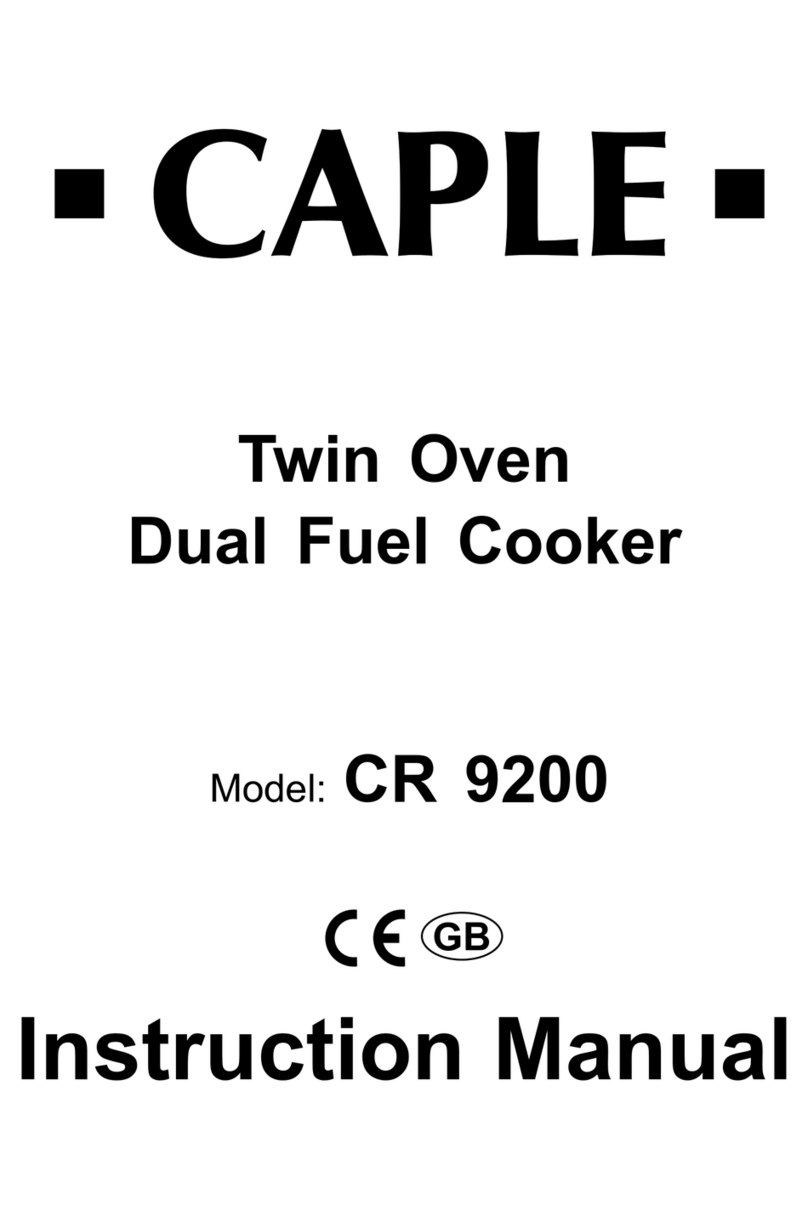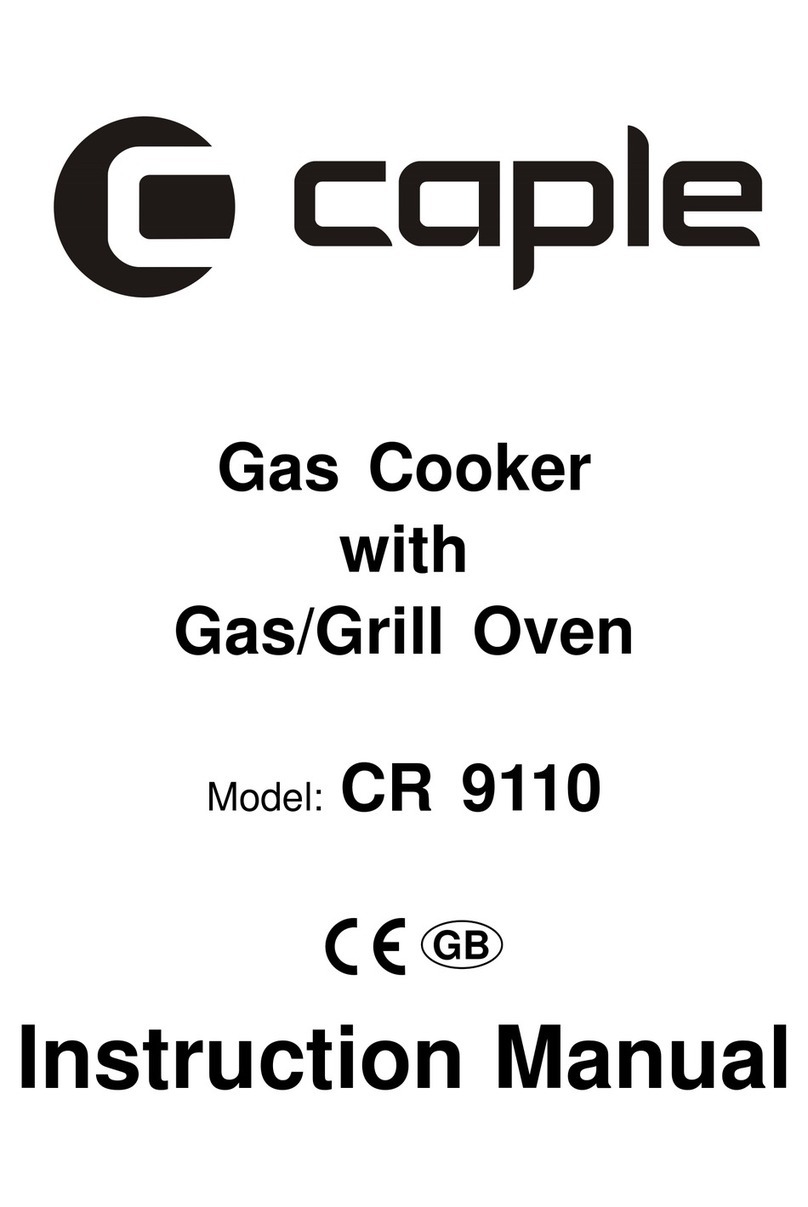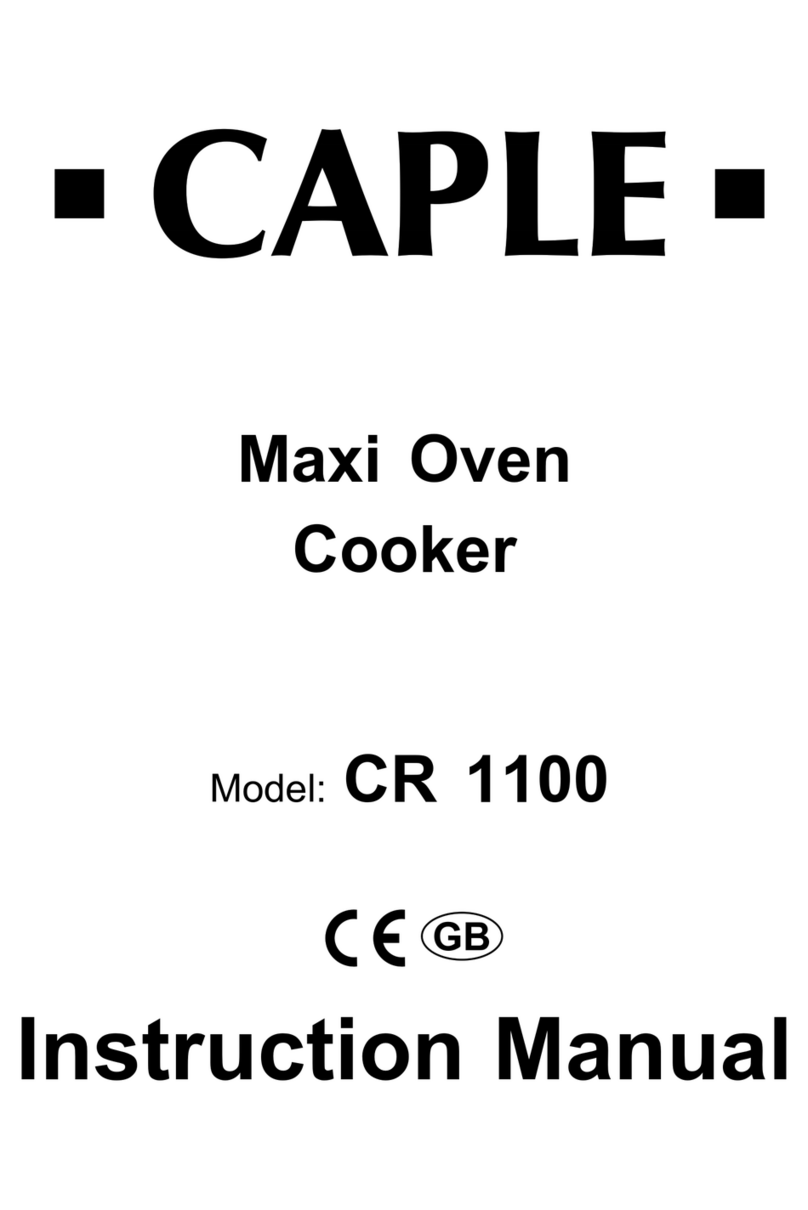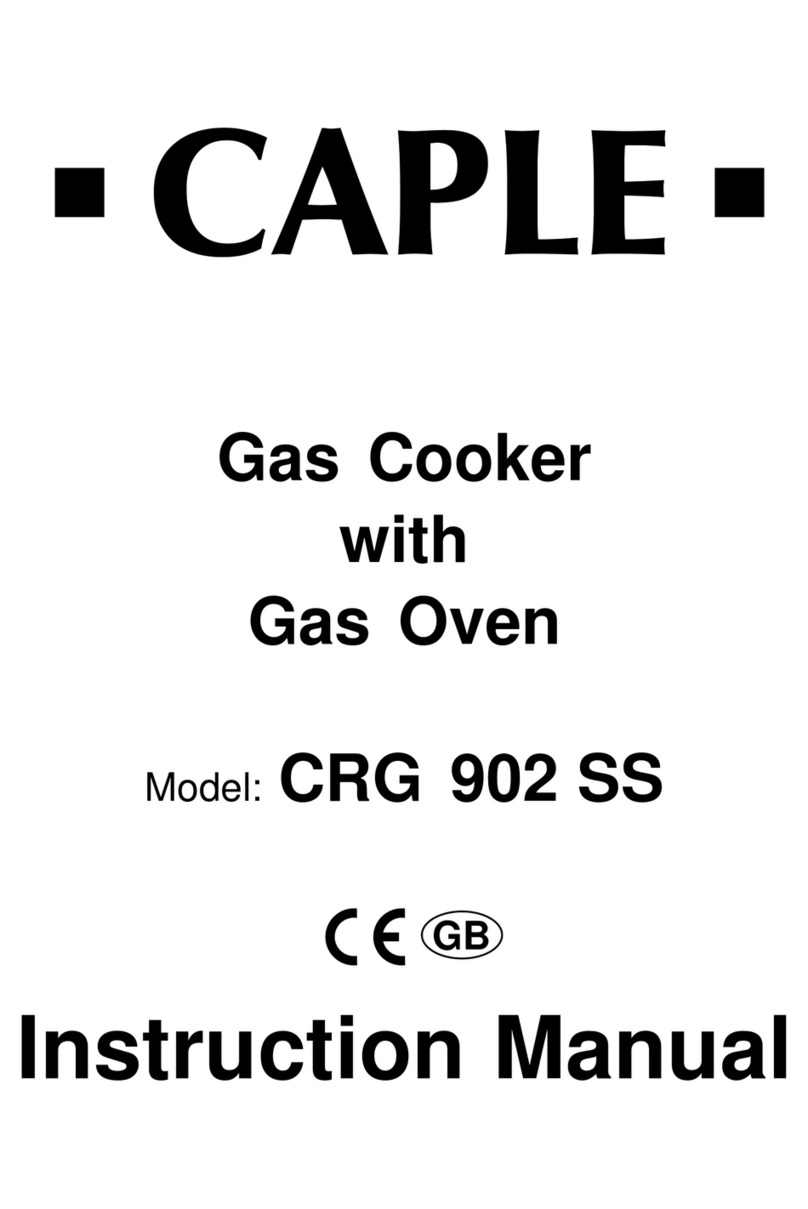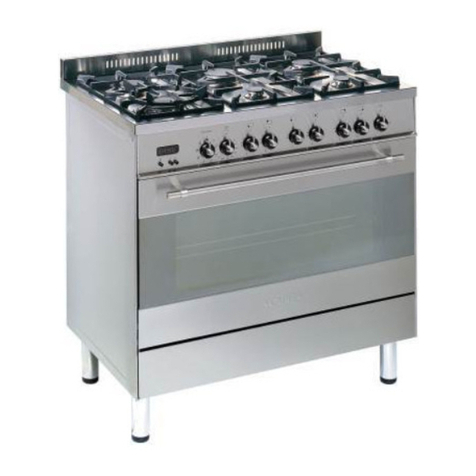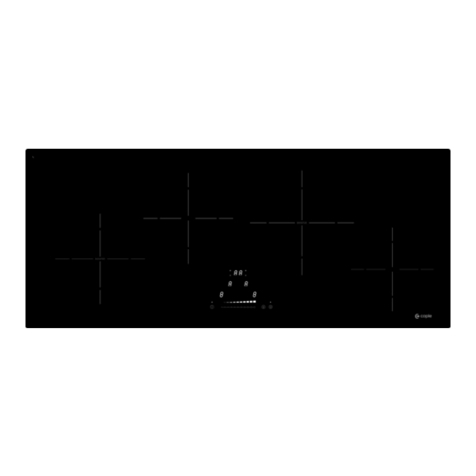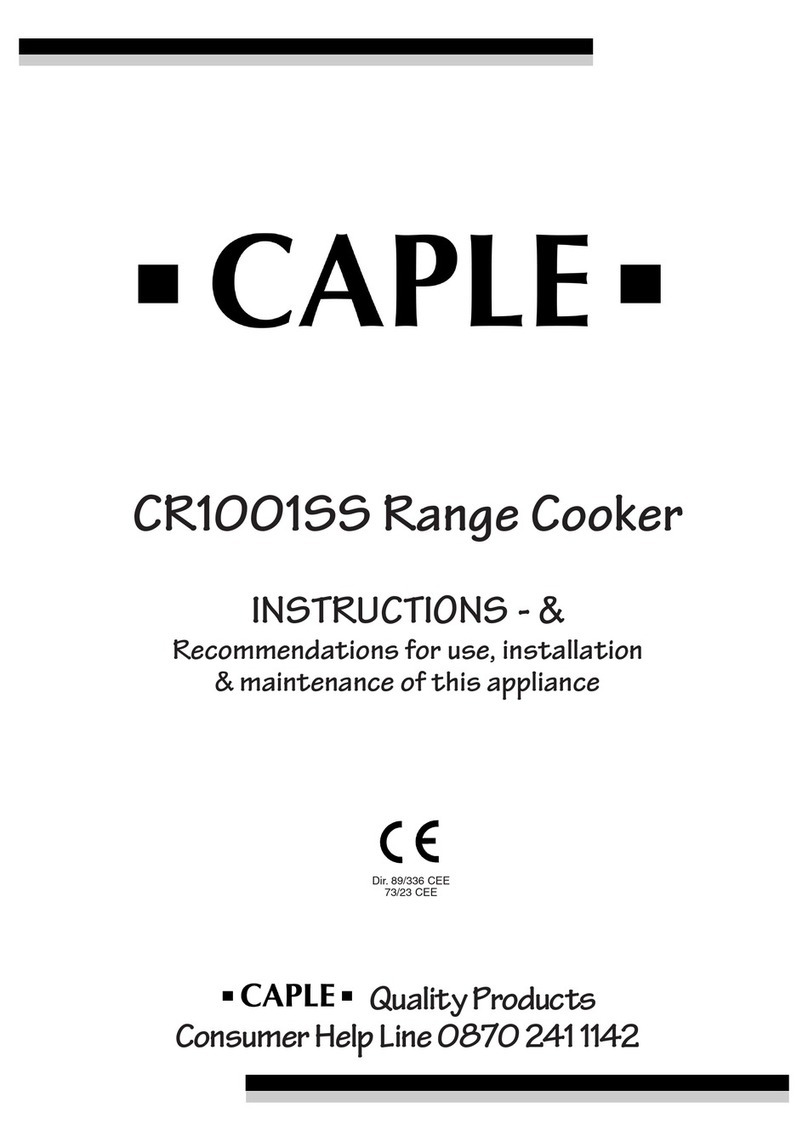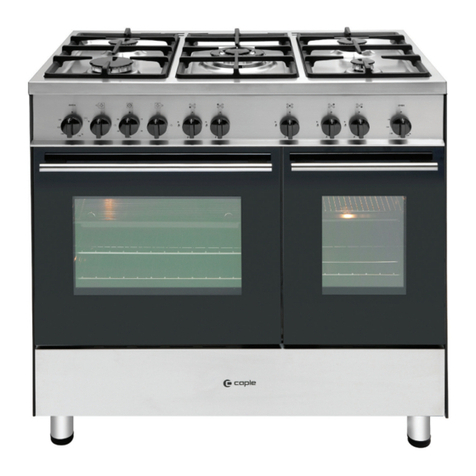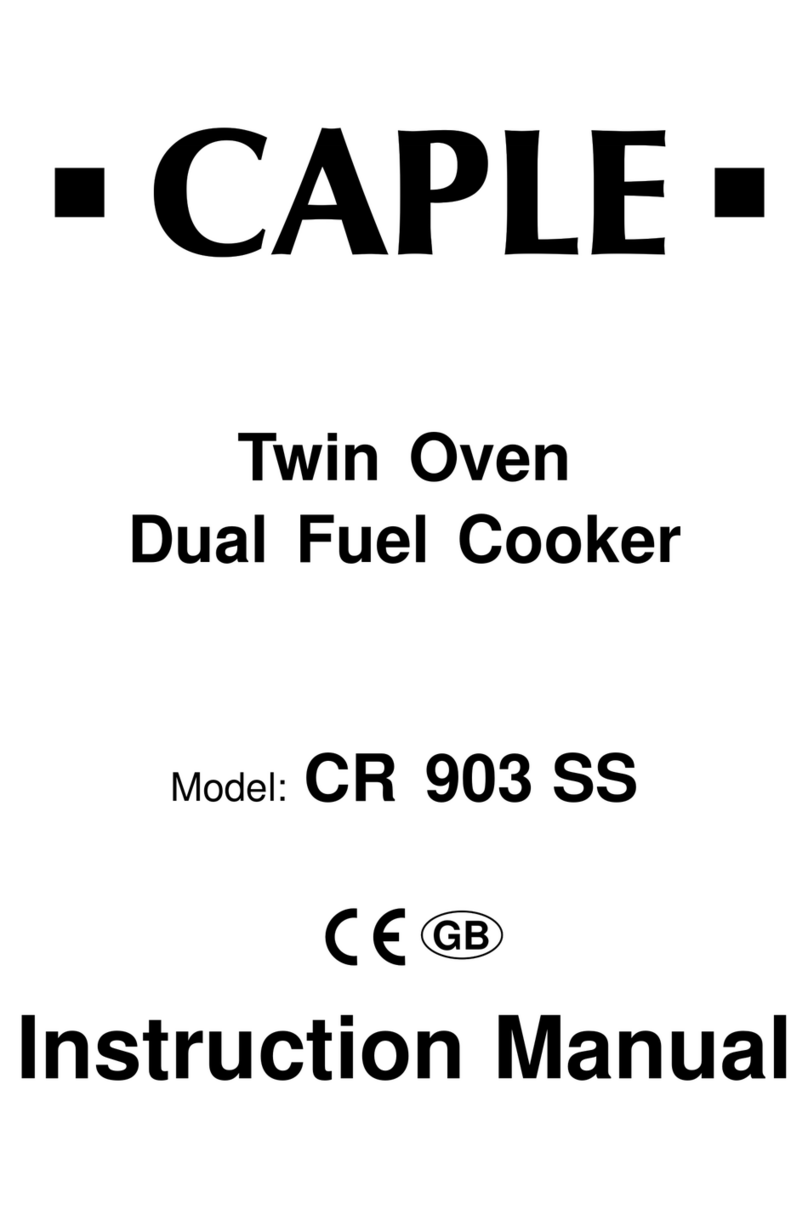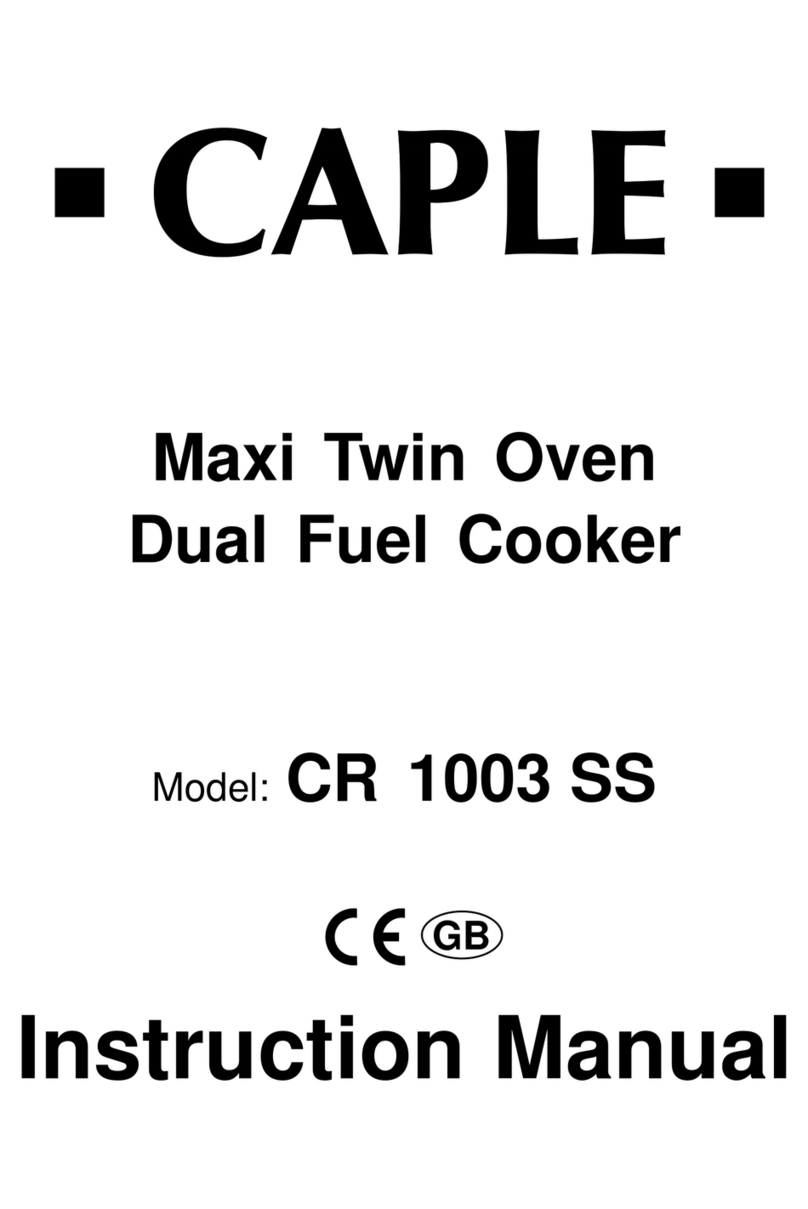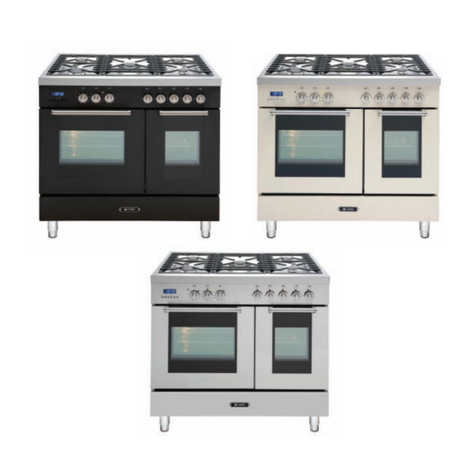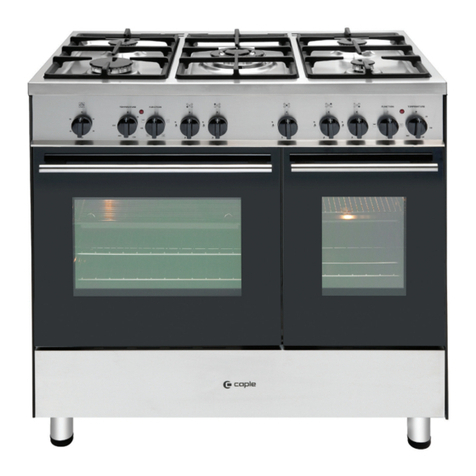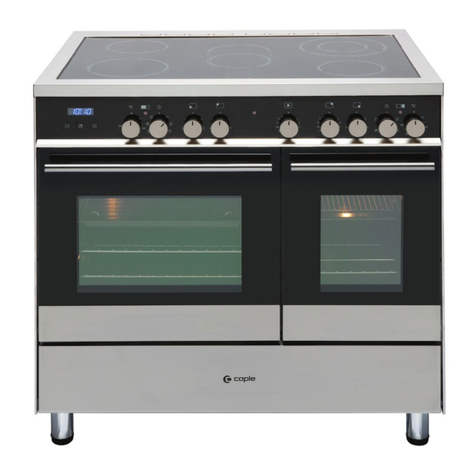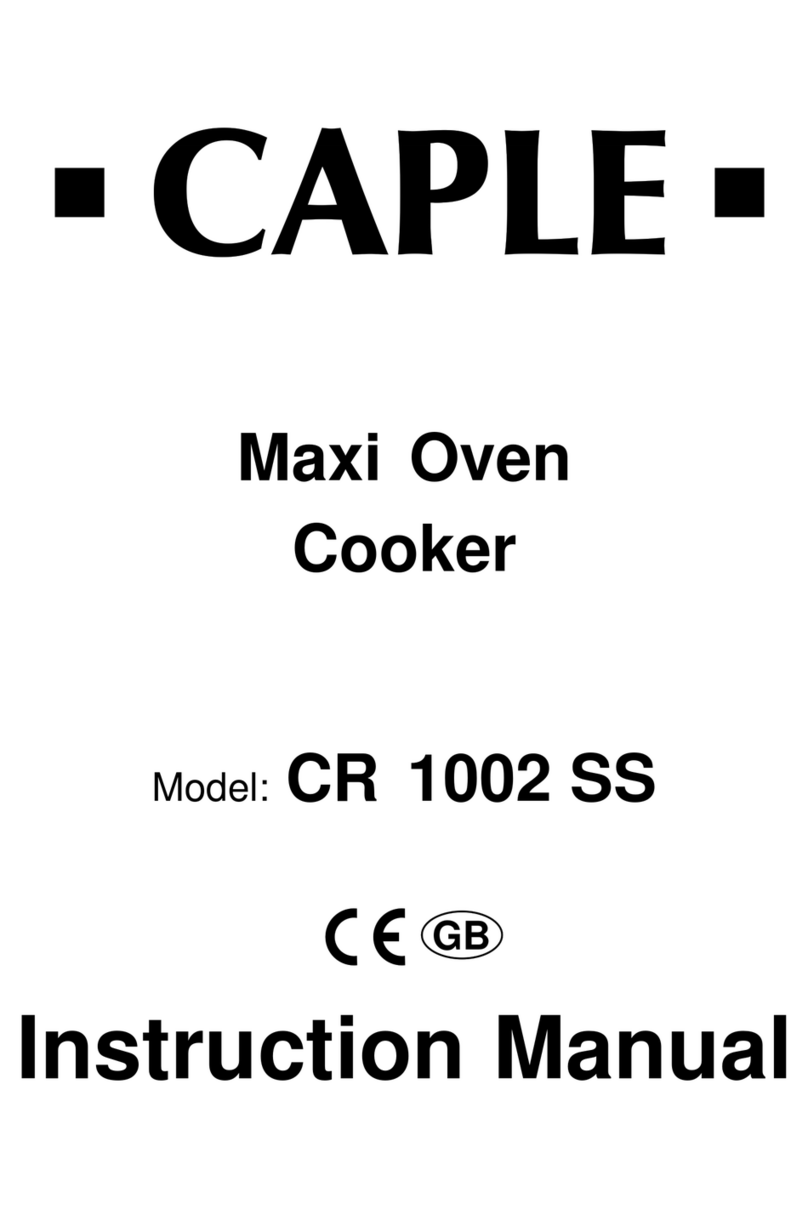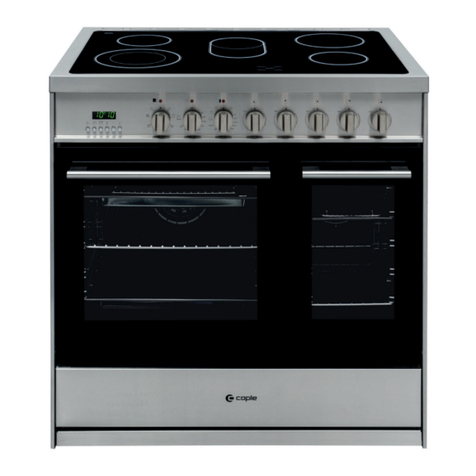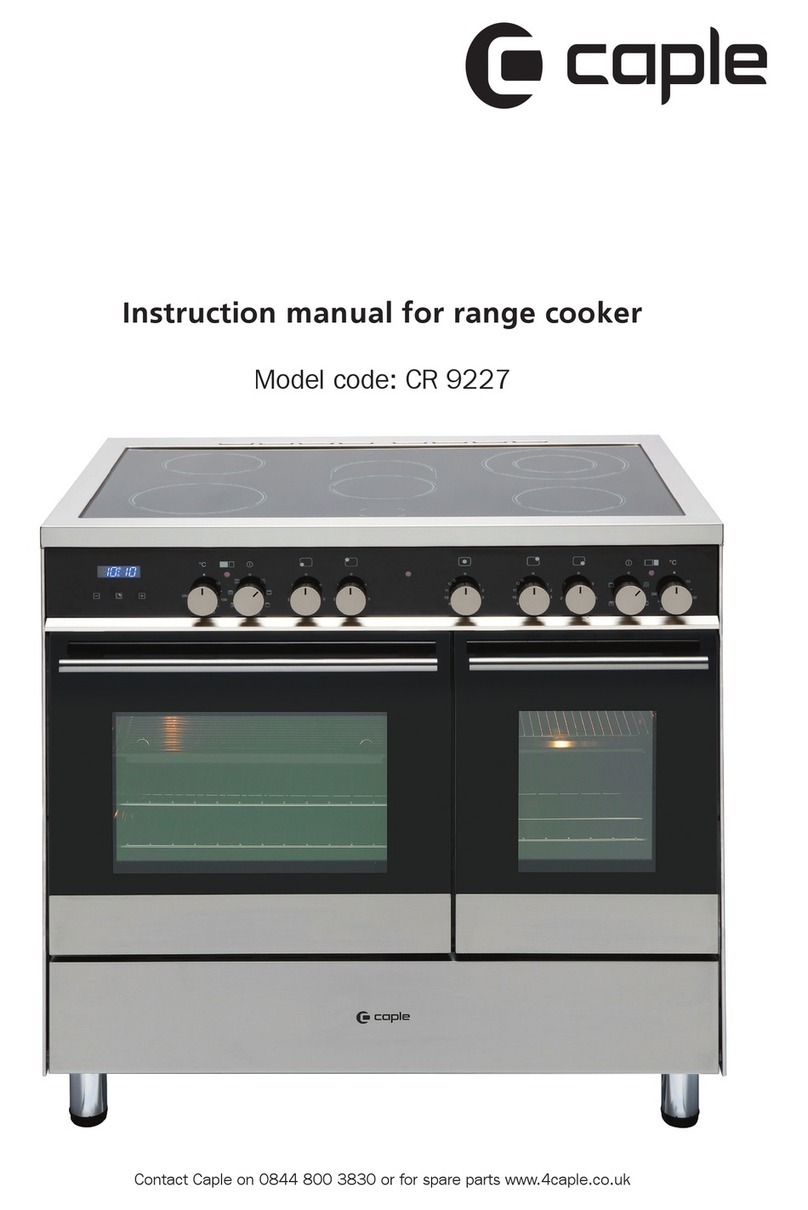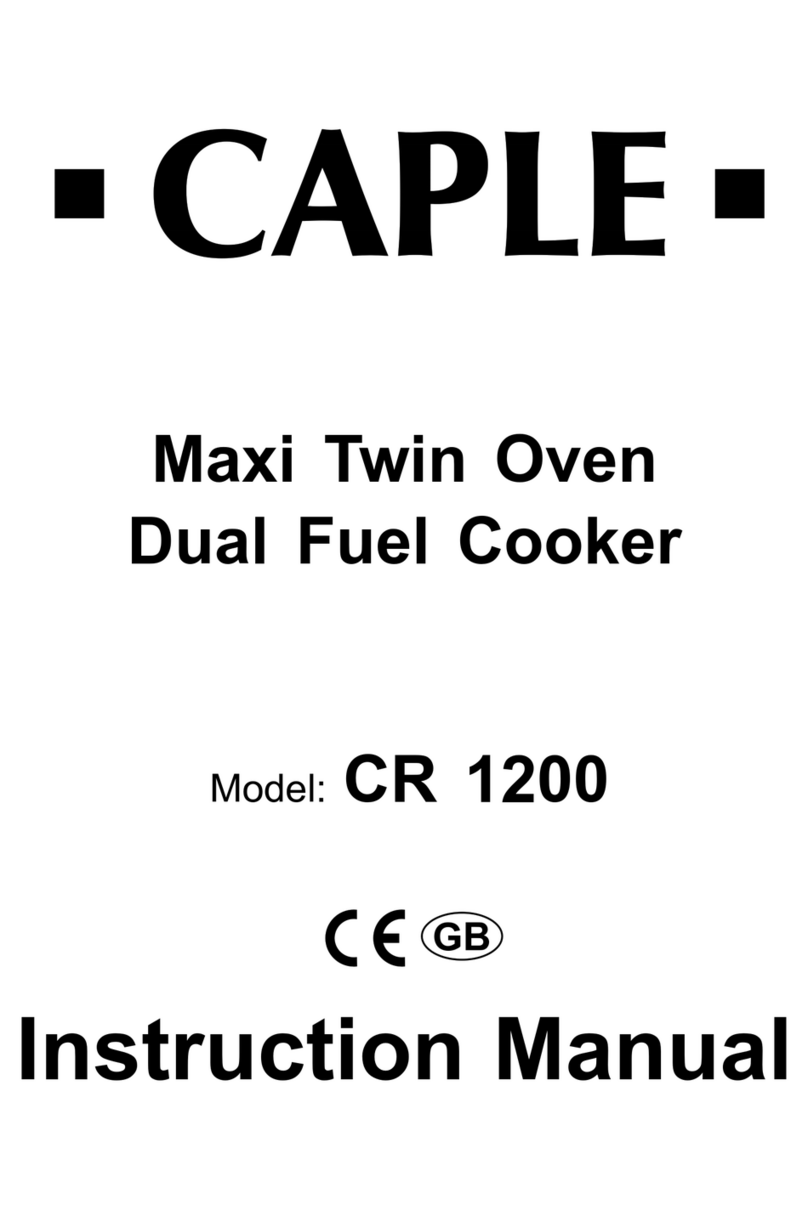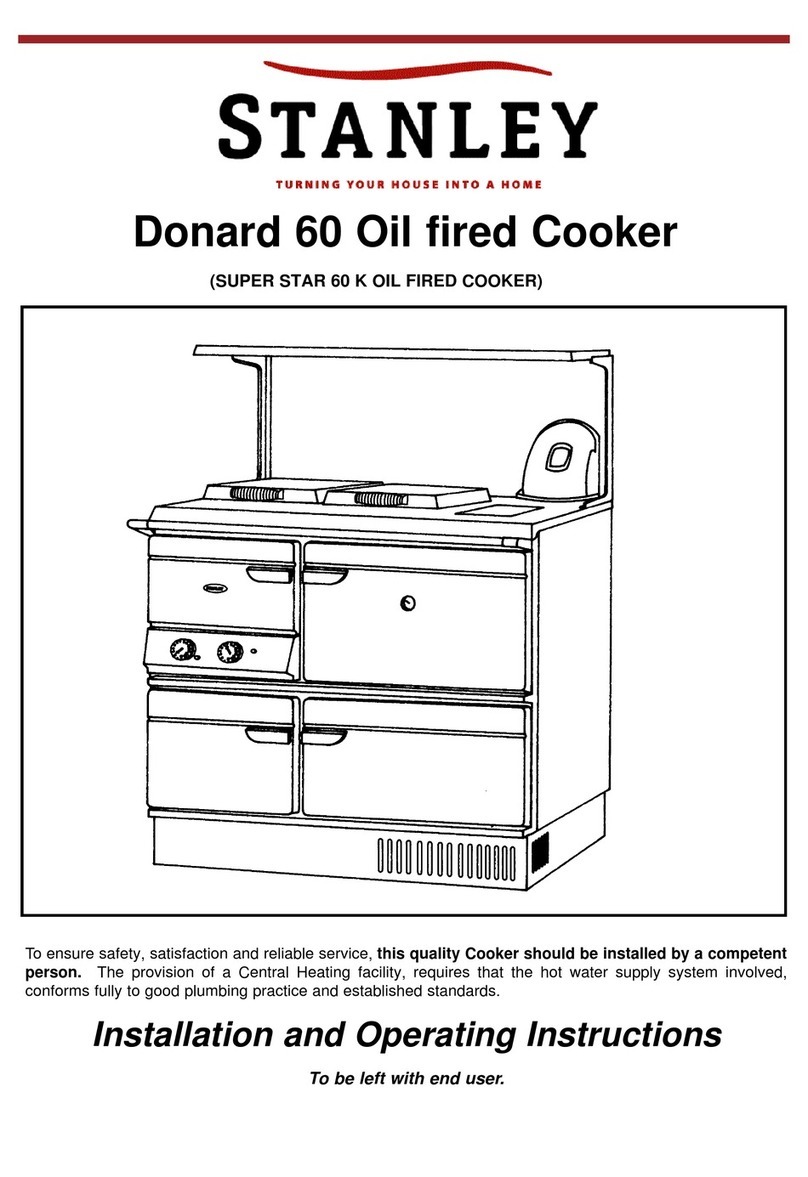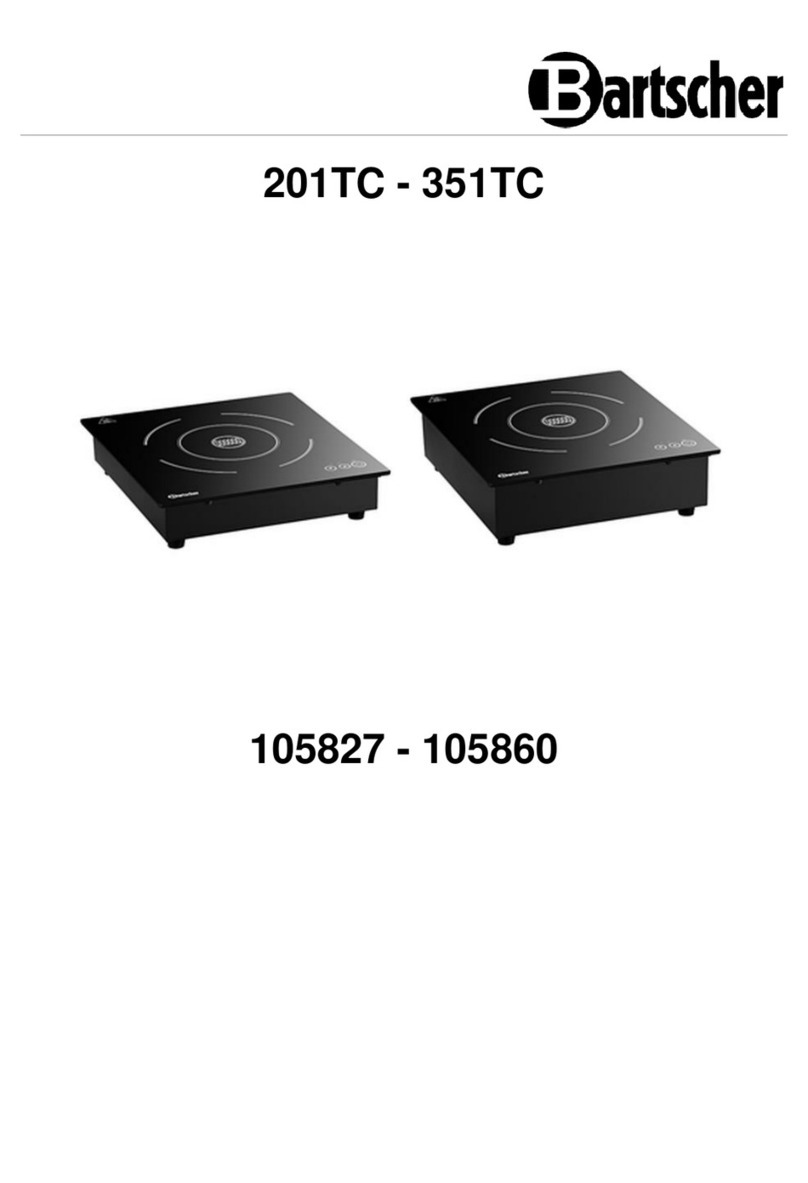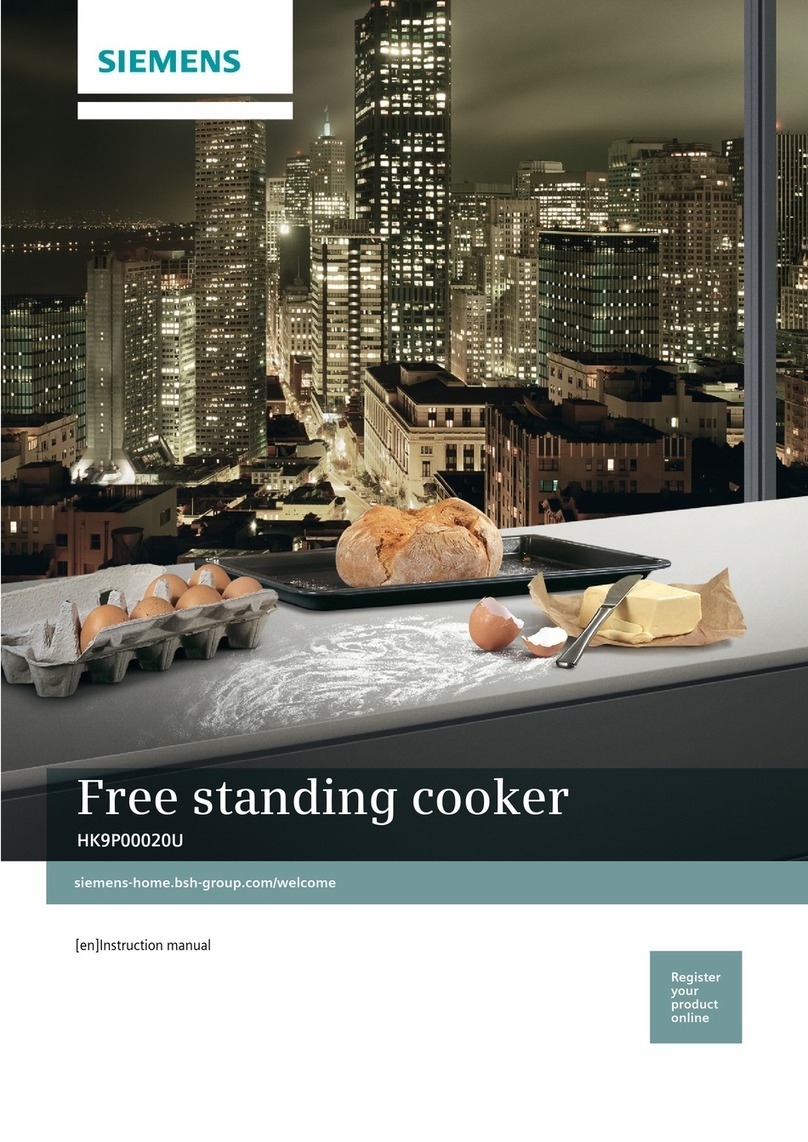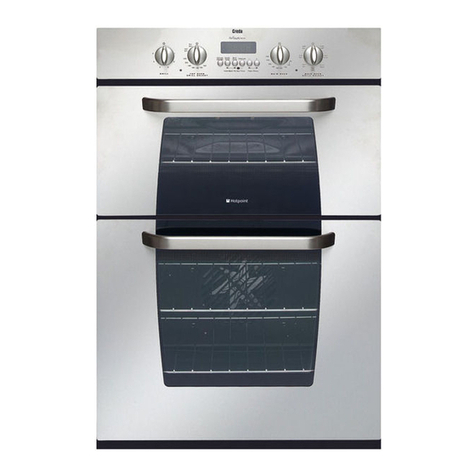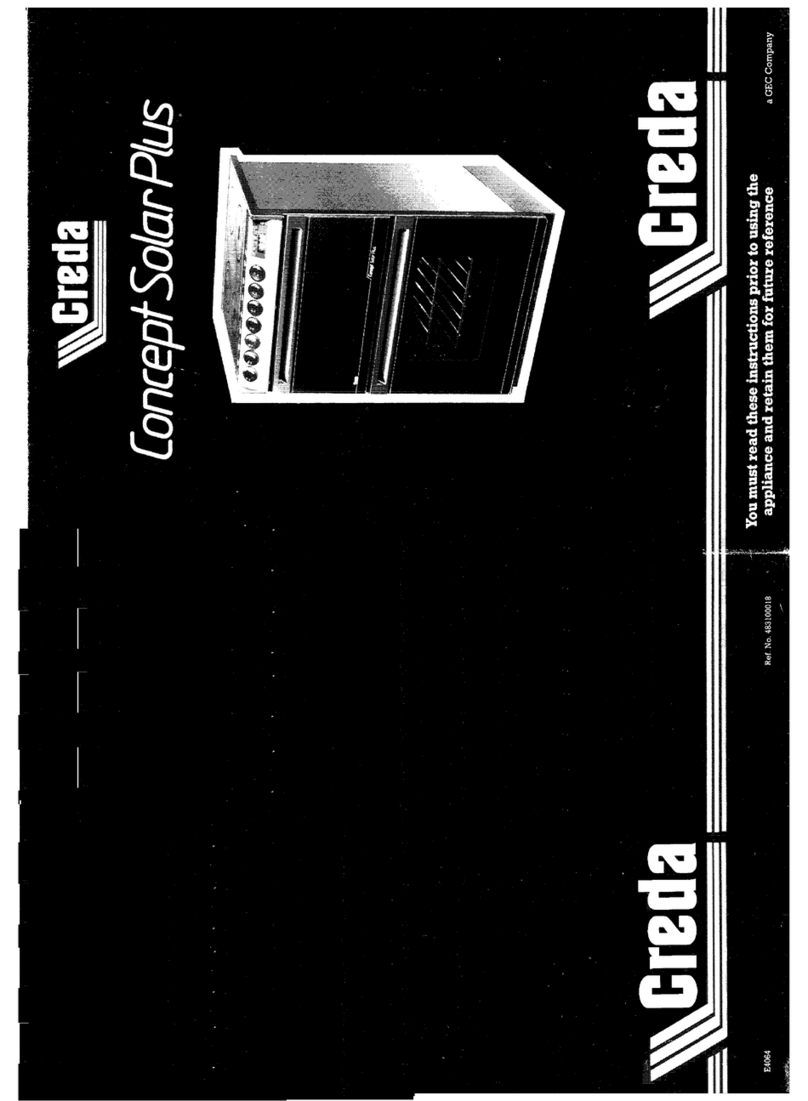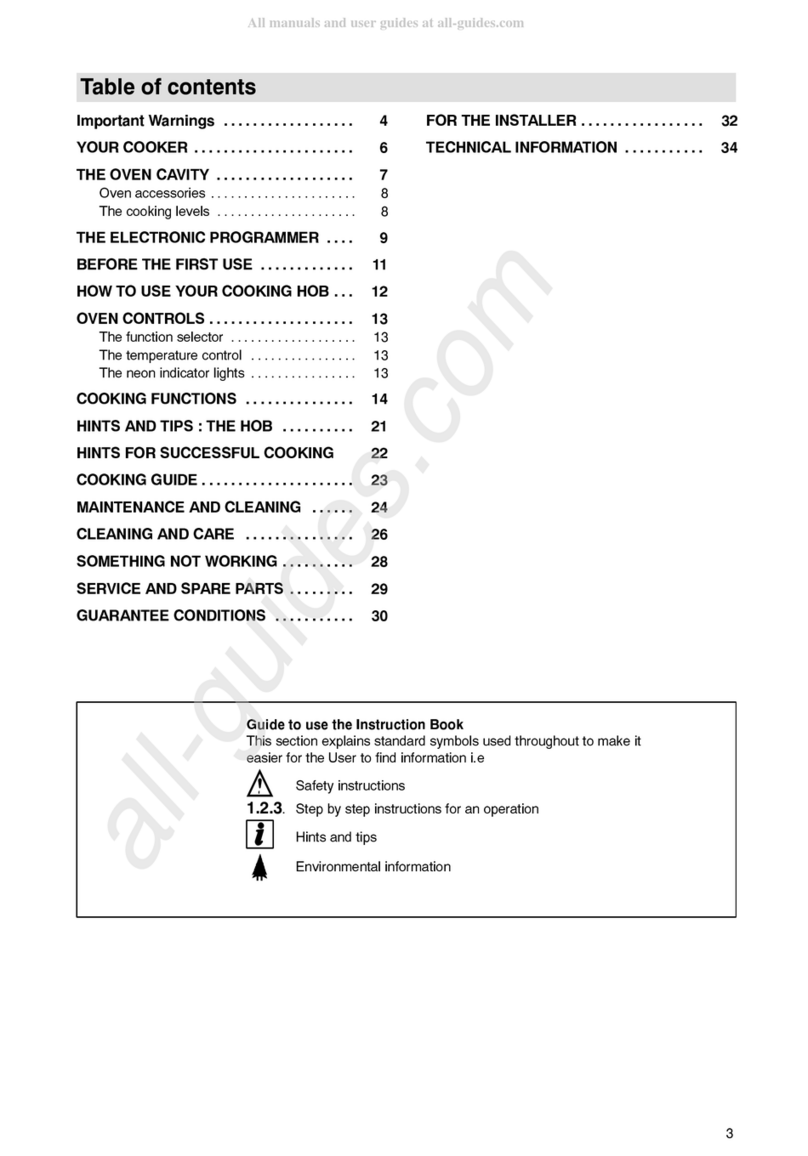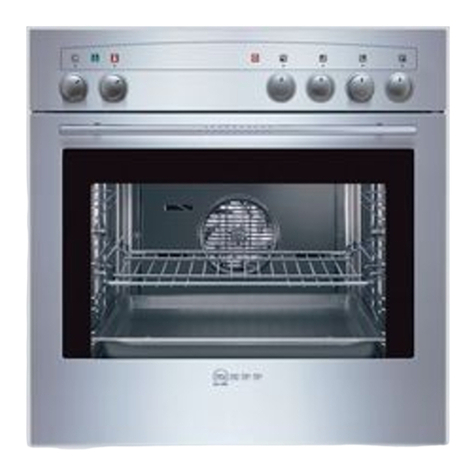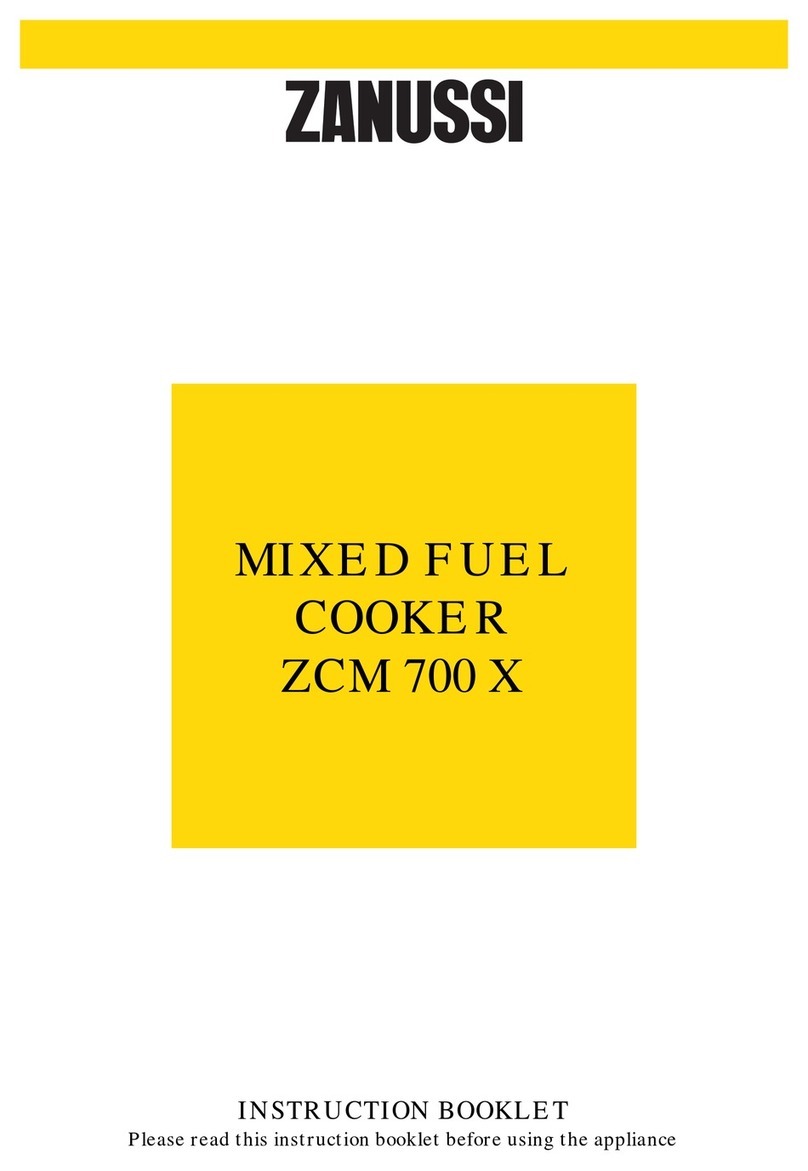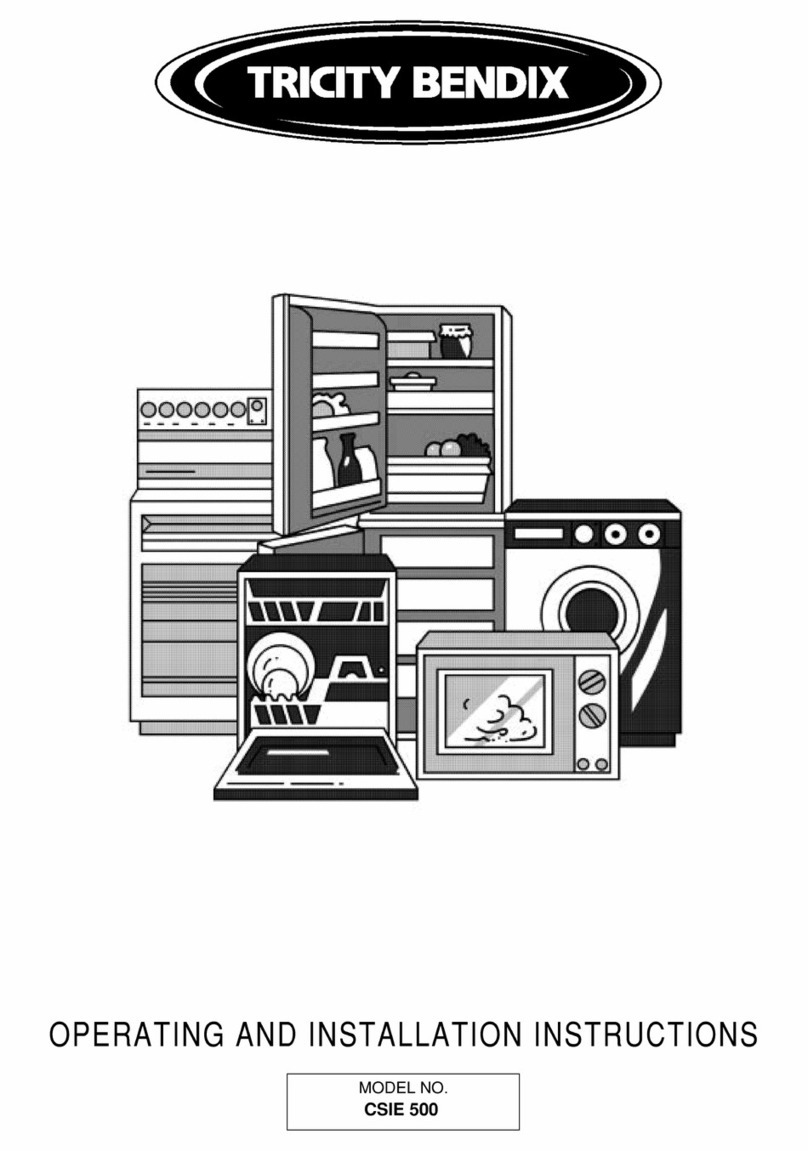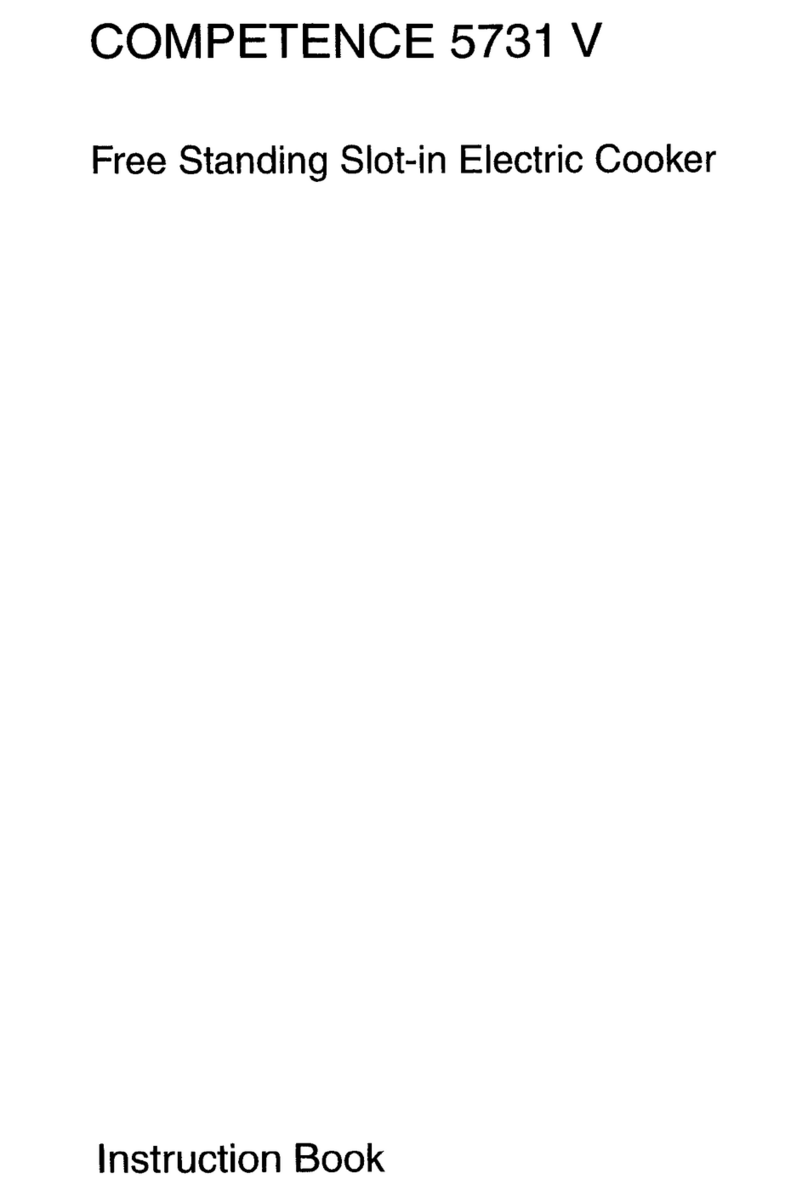3
Safety Reminders
Instruction Book
This appliance should only be used for
it’s intended purpose as described in
these instructions.
Ensure that you fully understand these
instructions before operating this appli-
ance.
Space Requirements
Ensure that the specified ventilation
space around the appliance is not
obstructed.
Food Splashes
Always wipe clean the oven after use.
Food splashes can carry on cooking next
time and may become a fire hazard.
Hot Surfaces
It is important to remember that the sur-
faces of cooking appliances get hot dur-
ing use and retain the heat for some time
after switching off.
It is therefore advisable to keep small
children away from the appliance.
The Grill and Top oven element
are exposed, so take great care when
placing food in the oven or removing it.
Use the grill pan handles or gloves.
DO NOT line the oven, grids, trays etc.
with aluminium foil as this could adverse-
ly affect the heating elements and it
could also damage the interior surfaces.
DO NOT place flammable materials in
the oven.
Faults
Do not continue to use this appliance if it
appears to be faulty.
After Use
After use, ensure that the hob knobs are
in position ●(off), and close the main
gas delivery valve or the gas cylinder
valve.
Switch the oven controls off.
Always switch off at the isolating switch
before cleaning the appliance, or
attempting any maintenance task.
CAPLE Service
To ensure the continued safe and effi-
cient operation of this appliance, we rec-
ommend that any servicing or repairs are
carried out only by an authorised CAPLE
SERVICE ENGINEER.
Before Use
Check that all accessories have been
removed from the oven interior.
Set the temperature to the maximum
position using the temperature control
knob.
Leave on for approximately 30 min-
utes. This will burn off any protective
coating applied to the oven during
manufacture.
The kitchen should be well ventilated
during this time as there may be an
odour given off.
When cool, wash the accessories and
the oven with warm water and mild
detergent.

